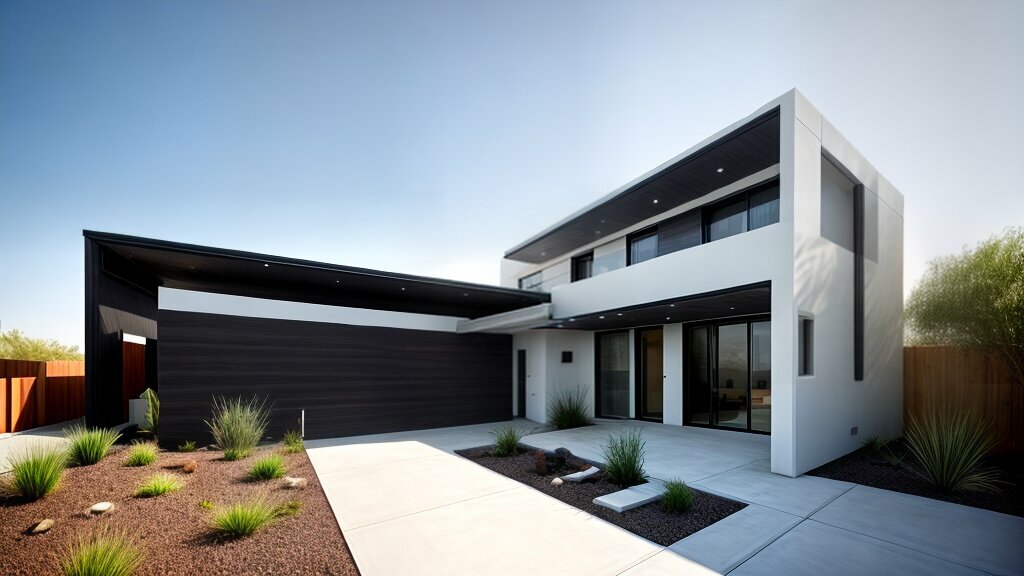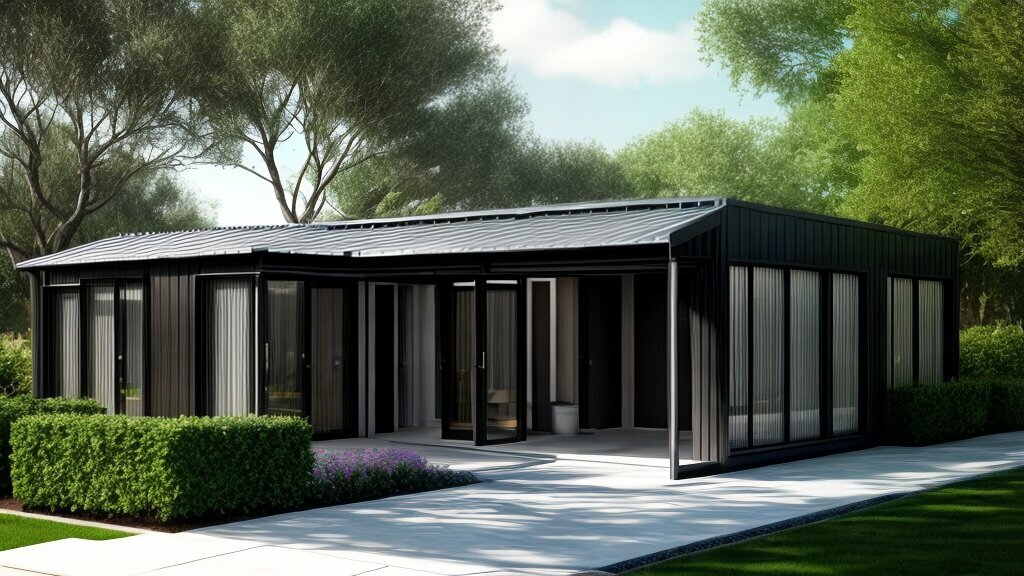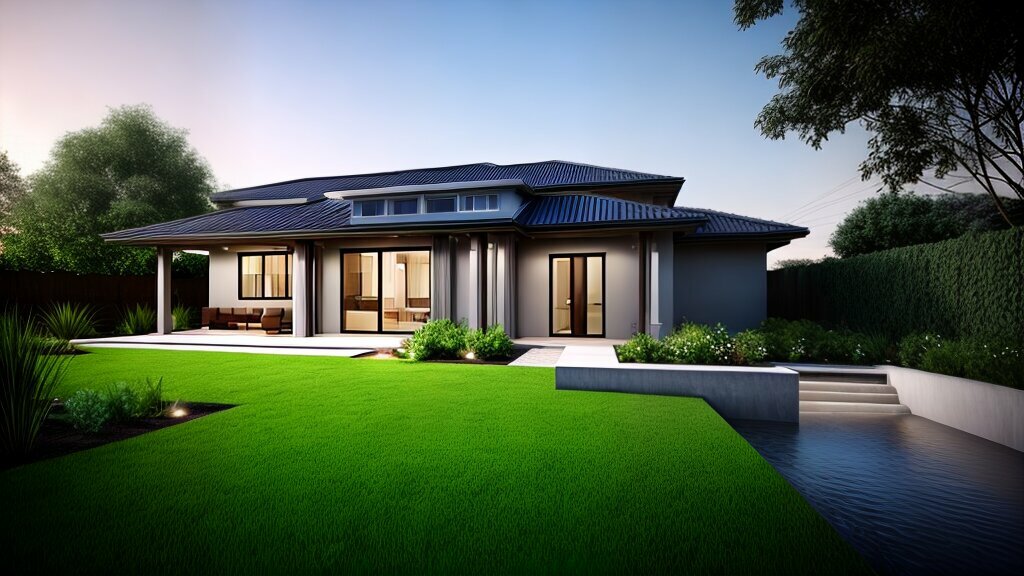Welcome to our article on water-efficient building systems! With growing concerns about the scarcity of fresh water, it’s important for us to explore sustainable solutions for managing and conserving this precious resource. In this article, we will delve into the significance of sustainable architecture, understanding water-efficient building systems, and the benefits of rainwater harvesting and greywater reuse. We will also look at how innovative water management can be integrated into building designs, and the challenges of adopting water-efficient systems. Finally, we will discuss the future trends in water-saving technologies and the policies and regulations that support sustainable building practices. Let’s get started!
Key Takeaways:
- Water-efficient building systems help conserve fresh water and reduce waste.
- Rainwater harvesting and greywater reuse are effective solutions for water management in buildings.
- Innovative water management can be integrated into building designs to maximise water savings.
- Policy and regulations play a crucial role in promoting sustainable building practices.
The Significance of Sustainable Architecture
Sustainable architecture, also known as green construction, is a significant trend in the construction industry that aims to create eco-friendly building solutions. This type of architecture involves the use of sustainable materials, energy-efficient systems, and innovative designs that prioritize environmental protection and conservation.
The increasing demand for sustainable architecture reflects the growing awareness of the negative impacts of traditional construction practices on the environment. According to a report by the United Nations Environment Programme, the construction industry is responsible for 39% of global carbon emissions and 36% of energy consumption. These figures highlight the urgency of implementing sustainable building practices to mitigate the effects of climate change.
Sustainable architecture offers numerous benefits for the environment, society, and economy. By reducing the carbon footprint of buildings, it can help mitigate climate change and improve air and water quality. Additionally, these buildings can improve the health and well-being of occupants by providing better indoor air quality, natural lighting, and thermal comfort.

The Significance of Sustainable Architecture
“Sustainable architecture offers numerous benefits for the environment, society, and economy.”
Moreover, sustainable architecture can generate cost savings for building owners and operators by reducing energy and water consumption. In the long run, sustainable buildings are also more resilient to climate change and natural disasters, ensuring their longevity and reducing the need for costly repairs and renovations.
Overall, sustainable architecture plays a crucial role in achieving a more sustainable future. Through innovative designs and sustainable building practices, architects can create buildings that not only meet the needs of its occupants but also protects the environment and conserves resources.
Understanding Water-Efficient Building Systems
Water-efficient building systems are a necessary component of sustainable building practices. It involves conserving water resources through the use of innovative technologies and design practices. The aim is to achieve efficient water management, reduce the overall water consumption of a building, and promote long-term water sustainability.
One critical aspect of water-efficient building systems is knowing how much water a building requires and how much it uses. Understanding the water usage is essential in identifying areas where water can be conserved. Builders can use water meters to track water usage and identify the needs of a building accurately.
There are several innovative water management practices to optimize water usage and reduce wastage. One of these is the use of low-flow fixtures, such as toilets, showerheads, and faucets. These fixtures can reduce water consumption by up to 50% without sacrificing functionality, making them a cost-effective and sustainable option for buildings.
Another important aspect of water-efficient building systems is the effective treatment and reuse of wastewater. While not suitable for drinking, greywater from sinks, showers, and washing machines can be reused for irrigation or operational processes. Greywater recycling systems capture and treat the wastewater, making it safe for reuse while reducing water consumption and wastage.
The efficient use of water is gaining recognition worldwide, driving sustainable building practices and innovative water management. The next section will explore in-depth the importance of rainwater harvesting in conserving water resources.

Rainwater Harvesting: Capturing Nature’s Gift
Rainwater harvesting is a water-saving technology that has gained popularity in recent years. It involves the collection and storage of rainwater for use in various non-potable applications such as irrigation, toilet flushing, and laundry. By collecting and reusing rainwater, buildings can reduce their reliance on municipal water sources and mitigate the impact of droughts and water shortages.
The process of rainwater harvesting typically involves the installation of a catchment system that collects rainwater from rooftops and other surfaces. The collected water is then routed to a storage tank where it can be treated and reused. Depending on the specific application, a filtration and disinfection system may be necessary to ensure the water is safe for use.

Rainwater harvesting can be implemented on both small and large scales and can be a cost-effective way to reduce a building’s water footprint. In addition to reducing the demand on municipal water sources, it can also help to reduce the amount of stormwater runoff and associated pollution. Some cities offer incentives or rebates for buildings that implement rainwater harvesting systems, making it an even more attractive option for sustainable building.
Advantages of Rainwater Harvesting
There are several advantages to implementing a rainwater harvesting system:
- Reduces reliance on municipal water sources, saving money on water bills
- Helps to mitigate the impact of droughts and water shortages
- Reduces the amount of stormwater runoff and associated pollution
- Can be a cost-effective way to reduce a building’s water footprint
- Some cities offer incentives or rebates for buildings that implement rainwater harvesting systems
“Rainwater harvesting can be a simple and effective way to reduce a building’s water footprint and promote sustainable building practices.”
Challenges of Rainwater Harvesting
While rainwater harvesting can be a highly effective water-saving technology, there are some challenges to its implementation:
- The upfront cost of installing a rainwater harvesting system can be high
- Maintenance and monitoring of the system are necessary to ensure proper functioning
- The quality of the collected water may not be suitable for all applications without proper treatment
Despite these challenges, rainwater harvesting remains a highly effective and sustainable water-saving technology that can be implemented in a variety of different building types and applications. By reducing reliance on municipal water sources and promoting the reuse of rainwater, buildings can take an important step towards promoting sustainable building practices and reducing their water footprint.
Greywater Reuse: Maximizing Water Resources
Greywater is wastewater collected from sources other than toilets, such as sinks, showers, and washing machines. This water may contain traces of dirt, food, and grease, but it can be treated and reused for non-potable purposes such as irrigation, toilet flushing, and laundry.
Greywater reuse is gaining popularity as a cost-effective and sustainable method of water conservation. According to research, up to 40% of a household’s water usage can be replaced by treated greywater.
The process of greywater reuse involves treating the water through mechanical or biological filtration systems, disinfection, and storage. The treated water can then be distributed through a separate plumbing system for designated uses.
| Benefits of Greywater Reuse |
|
| Conserves water resources |
(Image related to greywater reuse) |
| Reduces strain on municipal water supply and treatment facilities |
|
| Lower water bills |
|
| Reduces water discharge to rivers and oceans |
|
| Improves soil quality through irrigation |
|
Implementing greywater reuse systems requires careful analysis of the site and building design, plumbing and filtration systems, and maintenance needs. It is vital to ensure that the water quality meets the required standards to avoid contamination.
Furthermore, greywater reuse solutions offer an opportunity to integrate sustainable and innovative water management practices into building designs. Developers need to incorporate these systems into the building code, offering incentives and promoting awareness to encourage the adoption of greywater reuse technologies.
In conclusion, the reuse of greywater is a sustainable and effective solution to maximize water resources, reduce water usage and bills, and promote innovative water management practices.
Integrating Water-Efficient Designs
Water-efficient designs are essential to maximize water resources while minimizing wastage. Innovative water management practices can help achieve sustainability goals and offer long-term benefits for both the environment and society.
One key aspect of water-efficient building systems is the integration of rainwater harvesting and greywater reuse. By capturing and reusing water, buildings can reduce their dependence on municipal water and save resources in the long run.
Integrating these designs requires careful planning and implementation. Architects and engineers must first analyze the local climate, building requirements, and the budget to determine the best approach. They can then incorporate water-efficient systems into the building’s design, such as low-flow fixtures, efficient irrigation systems, and permeable pavements.
When designing for water efficiency, it is also essential to consider the building’s energy consumption. Water and energy are closely intertwined, and energy-efficient systems can help reduce water usage. For example, solar-powered pumps can be used to power irrigation systems, reducing the reliance on conventional energy sources.
Moreover, designing for water efficiency requires the involvement of all stakeholders, including building owners, architects, engineers, and tenants. By promoting water-saving practices and reducing water wastage, they can contribute to sustainable building practices and create a more responsible built environment.
Overall, integrating water-efficient designs into building systems can offer numerous benefits, including reduced water wastage, lower energy consumption, and increased sustainability. By adopting such practices, we can help ensure that our buildings are not only efficient but also environmentally responsible.

Case Studies: Successful Implementation
Water-efficient building systems have been successfully implemented in various construction projects worldwide, bringing numerous benefits to both the environment and society. Let’s take a closer look at some of these successful case studies.
Case Study #1: One Central Park, Sydney
One Central Park, located in Sydney, Australia, is a residential and commercial complex that incorporates innovative water-saving technologies. The building’s green wall, featuring over 35,000 plants, helps to purify the air and cool the surrounding environment. Rainwater is captured and stored in tanks, which is then used for irrigation, toilet flushing, and cooling tower makeup. The building’s water-efficient systems have resulted in a 90% reduction in potable water use, as well as a 50% reduction in overall energy consumption.

Case Study #2: The Bullitt Center, Seattle
The Bullitt Center, located in Seattle, Washington, is a commercial building that is often referred to as the greenest commercial building in the world. The building incorporates numerous sustainable features, including a rainwater harvesting system that captures and treats rainwater for use in the building’s toilets, irrigation, and cooling tower. The Bullitt Center also features an innovative greywater system that treats wastewater on-site and reuses it for flushing toilets. The building’s water-efficient systems have resulted in a 70% reduction in water use, as well as a 95% reduction in energy use compared to a typical commercial building.
Case Study #3: Shanghai Tower, China
The Shanghai Tower, located in China, is a 128-story skyscraper that incorporates numerous sustainable features, including water-efficient building systems. Rainwater is captured and treated on-site, and the building’s greywater system reuses wastewater for toilet flushing. The tower’s water-efficient systems have resulted in a 40% reduction in water use compared to a typical skyscraper. The building also features a high-tech filtration system that removes pollutants from the air, making it one of the cleanest skyscrapers in the world.
These case studies demonstrate the significant benefits of water-efficient building systems and the positive impact they can have on the environment and society. By adopting sustainable building practices and innovative water management solutions, we can create a more resilient and sustainable future.
Overcoming Challenges: Adopting Water-Efficient Building Systems
While the benefits of water-efficient building systems are clear, there are still some challenges to adopting these practices in the construction industry. One significant hurdle is the initial cost of implementing these systems. However, it’s important to remember that the long-term savings in water and energy costs can offset the initial investment.
Another challenge is the lack of awareness and education among builders, architects, and homeowners about the benefits of water-efficient building systems. This can lead to resistance in implementing these technologies and practices.
Additionally, there may be regulatory and permitting hurdles to overcome in some areas. Building codes and regulations vary greatly between regions, so it’s important to research and understand the specific requirements in your area.
Despite these challenges, it’s important to remember that water-efficient building systems are essential for a sustainable future. By working together to overcome these obstacles, we can create a more water-efficient and environmentally friendly construction industry.

Image description: An illustration of a building with water droplets cascading down the sides, representing the implementation of water-efficient building systems.
Future Trends: Advancements in Water-Efficient Technologies
The world is constantly changing, and so are our water needs. As the global population grows and water scarcity becomes an increasingly pressing issue, the need for innovative and sustainable water management technologies arises.
The good news is that there is ongoing research and development in the field of water-efficient technologies. New and improved systems are being created to help us manage our water resources in a more sustainable manner. These advancements are making it easier for building owners and operators to adopt water-efficient systems, and for designers and architects to integrate these systems into new buildings and retrofit existing ones.
One of the most promising advancements in water-efficient technologies is the development of smart water management systems. These systems use sensors and data analytics to monitor and manage water use in real-time, allowing building managers to optimize their water use and minimize waste.
Another exciting development is the use of artificial intelligence (AI) to automate water systems. AI can be used to analyze data and make real-time decisions about how much water should be used for different purposes, allowing for more efficient and effective water management.
Other advancements include the use of new materials and coatings to reduce water consumption, such as low-flow fixtures and water-saving toilets. There are also developments in water treatment technologies, making it easier to recycle and reuse wastewater.
As we continue to advance in water-efficient technologies, we can look forward to a future where water is managed more sustainably, and where buildings and communities are designed to be more resilient in the face of water scarcity.

Benefits for the Environment and Society
Water-efficient building systems not only benefit the individual homeowner, but also have a wider positive impact on both the environment and society as a whole.
Implementing these systems can significantly reduce a building’s overall water consumption, decreasing the strain on local water resources. This, in turn, helps to support sustainable water management and promote the conservation of our planet’s valuable natural resources.
Furthermore, water-efficient building systems can help to mitigate the impact of droughts or periods of low rainfall, ensuring a reliable and consistent supply of water for essential activities such as farming, sanitation, and hygiene.

From a societal perspective, the implementation of water-efficient building systems can promote public health and wellbeing by reducing the risk of waterborne disease outbreaks and increasing access to safe, clean water.
In addition, these systems can help to reduce water bills for homeowners, making sustainable living more accessible and affordable.
Overall, water-efficient building systems play a vital role in supporting a greener, more sustainable future for both our communities and our planet.
Policy and Regulations: Encouraging Water Efficiency in Construction
Implementing water-efficient building systems requires a collaborative effort from various stakeholders, including policymakers. Government support can encourage the adoption of sustainable building practices and promote water-saving technologies.
One effective way to encourage water efficiency in construction is through building codes and regulations. Mandatory requirements for water-efficient designs and technologies can incentivise builders and developers to implement sustainable practices. Local governments can also offer tax credits or other financial incentives to those who incorporate water-efficient systems into their building designs.
In addition to building codes, public awareness campaigns can also play a significant role in advocating for water efficiency. These campaigns can educate the public on the benefits of sustainable practices, including cost savings and reduced environmental impact. By creating a culture of conservation, communities can work together towards a more sustainable future.
Finally, collaboration between government agencies, academics, and industry professionals can foster innovation and development of new water-efficient technologies. Through research and development, advancements in water management can continue to shape the future of sustainable construction.

Together, these policy and regulation efforts can significantly impact the adoption of water-efficient building systems. By creating a supportive environment for sustainable practices, we can work towards a more resilient and sustainable future for our planet and communities.
Conclusion
Water-efficient building systems are no longer a luxury, but an essential element of modern construction. With the world’s population growing and water resources becoming scarcer, we need to adopt sustainable building practices that minimize our impact on the environment.
From rainwater harvesting to greywater reuse, we have seen several innovative water-saving technologies that are not only environmentally friendly but also cost-effective in the long run. Sustainable architecture is not just a buzzword but a practical way forward, and water-efficient building systems are a crucial part of this approach.
By understanding the importance of water-efficient designs, we can create buildings that maximize our water resources without compromising on comfort or functionality. We have seen successful implementation of these systems in various case studies, and policy and regulations can further encourage their adoption.
As we look to the future, advancements in water-efficient technologies will continue to evolve, and we can expect to see more innovative approaches to managing our water resources. Overall, water-efficient building systems have benefits for both the environment and society, and we should all strive to adopt them in our construction practices.
FAQ
Q: What are water-efficient building systems?
A: Water-efficient building systems are sustainable building practices that aim to minimize water consumption and maximize water efficiency in construction and operation.
Q: How do water-efficient building systems contribute to sustainability?
A: Water-efficient building systems contribute to sustainability by conserving water, reducing water waste, and promoting responsible water management.
Q: What is rainwater harvesting?
A: Rainwater harvesting is the process of collecting and storing rainwater for various uses like irrigation, flushing toilets, and washing clothes.
Q: What are the benefits of rainwater harvesting?
A: Rainwater harvesting helps reduce reliance on municipal water supplies, conserves water resources, and can lead to cost savings in water bills.
Q: What is greywater reuse?
A: Greywater reuse refers to the recycling of lightly used water from sources like sinks, showers, and washing machines for non-potable purposes such as irrigation and toilet flushing.
Q: How does greywater reuse contribute to water efficiency?
A: Greywater reuse helps reduce freshwater consumption, reduces strain on wastewater treatment facilities, and promotes sustainable water management.
Q: How can water-efficient designs be integrated into buildings?
A: Water-efficient designs can be integrated into buildings through the use of technologies like low-flow fixtures, efficient irrigation systems, and water recycling systems.
Q: What are some successful case studies of water-efficient building system implementation?
A: Some successful case studies of water-efficient building system implementation include buildings that have achieved significant water savings through innovative design and technology.
Q: What are the challenges in adopting water-efficient building systems?
A: Challenges in adopting water-efficient building systems include high upfront costs, lack of awareness, and resistance to change traditional practices.
Q: What are the future trends in water-efficient technologies?
A: Future trends in water-efficient technologies include advancements in smart water management systems, enhanced water recycling technologies, and integration of renewable energy sources.
Q: What are the benefits of water-efficient building systems for the environment and society?
A: Water-efficient building systems help conserve water resources, reduce water pollution, and contribute to the overall sustainability of communities.
Q: How do policies and regulations encourage water efficiency in construction?
A: Policies and regulations can incentivize water efficiency in construction through requirements for water-efficient designs, certifications for sustainable buildings, and financial incentives.




























Post comments (0)